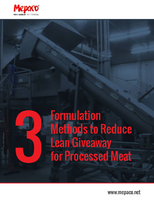Ohio Decides to improve renewables interconnection procedures.
Share:
Press Release Summary:
Public Utilities Commission of Ohio adopted improved interconnection procedures that help facilitate connection of small renewable energy systems to distribution grid. IREC participated in Ohio and Federal Energy Regulatory Commission (FERC) rulemaking processes for several months in 2012, and Ohio commission's order adopted several of IREC's key recommendations and improved upon existing rules. Ohio is first state to update its rules since FERC's approval of SGIP modifications.
Original Press Release:
Ohio Joins Top States Improving Interconnection Procedures for Renewables
Ohio joins the ranks of progressive states like California, Hawaii and Massachusetts this week as the Public Utilities Commission of Ohio adopted greatly improved interconnection procedures that make it easier for small renewable energy systems to connect to the distribution grid.
The decision comes on the heels of a similar move by the Federal Energy Regulatory Commission (FERC), which adopted many of the same provisions in a recent revision of the federal Small Generator Interconnection Procedures (SGIP).
"Ohio's decision represents a very positive step forward for the deployment of clean energy in the state," said Jane Weissman, president and CEO of the Interstate Renewable Energy Council, Inc. (IREC). "It makes it possible for more individuals and businesses to benefit from renewable energy and sets a great example for other states that may be considering improvements to their interconnection processes."
With a steady increase in the number of small renewable energy systems connecting to the distribution grid, it becomes increasingly important to ensure that they can do so in a safe, efficient and cost-effective manner.
"These updates will really help streamline the interconnection process," said Sky Stanfield an attorney who represents IREC. "Specifically, they will help developers find high-value locations for siting projects and expand the opportunities for projects to follow an expedited review, all while maintaining the safety, power quality and reliability of the grid."
IREC participated in the Ohio and FERC rulemaking processes for several months beginning in late 2012.
The Ohio commission's order adopted many of IREC's key recommendations and makes the following significant improvements upon the existing rules:
Increases the capacity threshold for simplified Level 1 interconnection review from 10 kilowatt (kW) to 25 kW for inverter-based systems and reduces the initial review time from 1 month to 15 business days;
Adopts flexible size eligibility requirements for Level 2 "Fast Track" interconnection review that expands beyond the current two-megawatt limit, depending on proximity of a generator to a substation and line voltage levels;
Implements a uniform, well-defined supplemental review process for applications that may fail one or more initial review Fast Track screens, but that do not impose challenges significant enough to warrant a more extensive study process;
Adopts the emerging best practice of using 100% of minimum load as a penetration screen in the supplemental review process; and
Requires utilities to provide interested customers with a pre-application report, for a $300 flat fee, to help identify areas on the grid that will accommodate distributed generation.
This proactive approach makes Ohio the first state to update its rules since FERC's approval of the SGIP modifications. While Ohio had a head start on the revision process, the adoption of these new state rules so soon after the FERC's order encourages a broader move among states to incorporate similar updates for small generator system interconnections into their own state procedures.
About IREC
IREC is a non-profit organization that believes clean energy is critical to achieving a sustainable and economically strong future. To pave this clean energy path, IREC works to expand consumer access to clean energy; generates information and objective analysis grounded in best practices and standards; and leads programs to build a quality clean energy workforce, including a unique credentialing program for training programs and instructors. Since 1982, IREC's programs and policies have benefitted energy consumers, policymakers, utilities and the clean energy industry. As of July 2013, IREC is an accredited American National Standards Developer. For more information, visit http://www.irecusa.org




